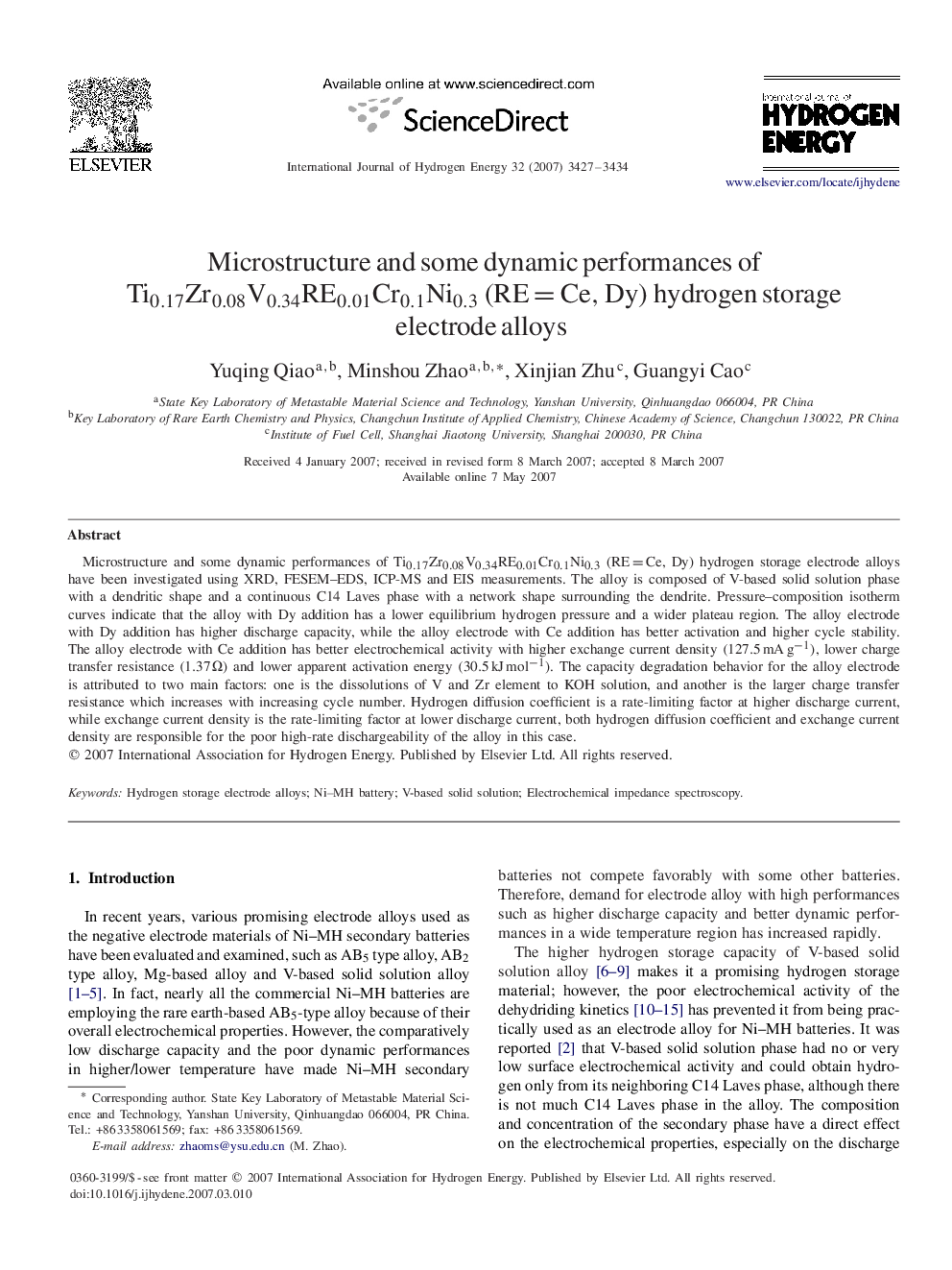| Article ID | Journal | Published Year | Pages | File Type |
|---|---|---|---|---|
| 1279689 | International Journal of Hydrogen Energy | 2007 | 8 Pages |
Microstructure and some dynamic performances of Ti0.17Zr0.08V0.34RE0.01Cr0.1Ni0.3Ti0.17Zr0.08V0.34RE0.01Cr0.1Ni0.3 (RE=Ce, Dy) hydrogen storage electrode alloys have been investigated using XRD, FESEM–EDS, ICP-MS and EIS measurements. The alloy is composed of V-based solid solution phase with a dendritic shape and a continuous C14 Laves phase with a network shape surrounding the dendrite. Pressure–composition isotherm curves indicate that the alloy with Dy addition has a lower equilibrium hydrogen pressure and a wider plateau region. The alloy electrode with Dy addition has higher discharge capacity, while the alloy electrode with Ce addition has better activation and higher cycle stability. The alloy electrode with Ce addition has better electrochemical activity with higher exchange current density (127.5mAg-1), lower charge transfer resistance (1.37Ω) and lower apparent activation energy (30.5kJmol-1). The capacity degradation behavior for the alloy electrode is attributed to two main factors: one is the dissolutions of V and Zr element to KOH solution, and another is the larger charge transfer resistance which increases with increasing cycle number. Hydrogen diffusion coefficient is a rate-limiting factor at higher discharge current, while exchange current density is the rate-limiting factor at lower discharge current, both hydrogen diffusion coefficient and exchange current density are responsible for the poor high-rate dischargeability of the alloy in this case.
